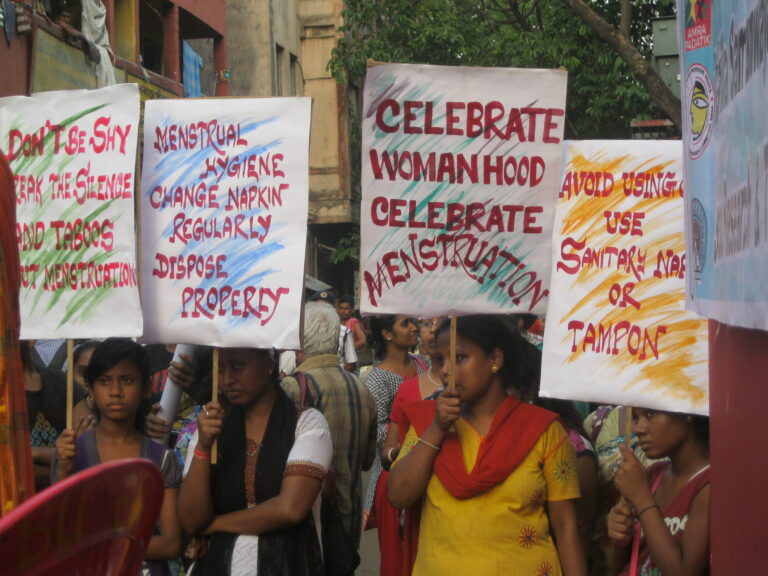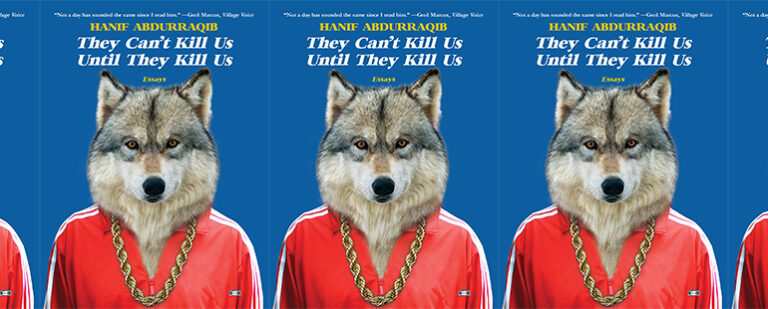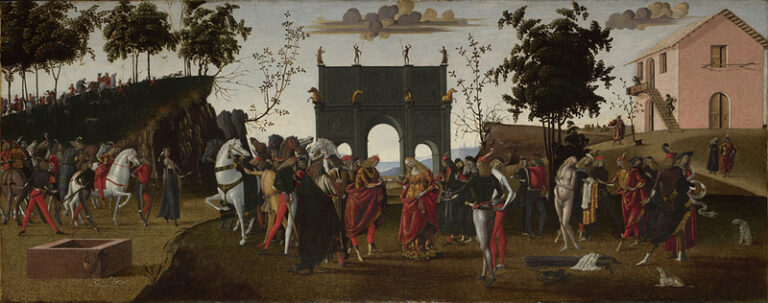Zong! and the Financialization of the Black Body

The usefulness of a comparison between M. NourbeSe Philip’s 2008 book of poetry, Zong!: As told to the author by Setaey Adamu Boateng, and Susan Briante’s 2016 book of poetry, The Market Wonders, may not be immediately apparent. On the one hand, The Market Wonders meditates on the prophetic power of the stock market through a divination of numbers, attempting to interpret the latest, arbitrary instantiations of value that the Dow Jones Industrial Average necessarily inscribes upon us all. On the other hand, Zong! tries to account for the lives lost aboard the eponymous slave ship bound in 1781 from the west coast of Africa to Jamaica. Philip performs the brutal violence of chattel slavery through an explosive fragmentation of linguistic material and historical archive. Zong! and The Market Wonders connect through an investigation of naturalized abstract value and the consequences of submission to an oppressive regime of (ac)counting and valuation. Through language, they both stage a kind of violence that is capable of being inflicted upon people when their bodies are abstracted into a “type”—and specifically a type of capital. Enslaved people aboard the Zong were abstracted to a high degree: they were not people but non-people, non-human commodities bought and paid for, forms of money existing as exchange value and insurance payout.
Alongside the event itself, what is perhaps most disturbing about the tragedy of the Zong is that, in the surviving historical record of its journey, the violence that took place aboard this ship is flattened and enervated by a purely numerical account of those events. The archive does not present a narrative of the approximately 150 enslaved Africans who were thrown overboard and drowned. Rather, the case pertaining to the Zong that was presented to the Lord Commissioners in Liverpool was a case of insurance fraud. The captain had attempted to secure the money their bodies were insured for by dumping them overboard when it became clear that the ship had become lost and supplies were running low. The crew had hoped to sell their human cargo in Jamaica, but it would serve them just as well to recoup the value for which they had already been underwritten, claiming these commodities had been lost during a storm at sea.
Philip writes, “Captain Luke Collingwood is of the belief that if the African slaves on board die a natural death, the owners of the ship will have to bear the cost, but if they were ‘thrown alive into the sea, it would be the loss of the underwriters.’ In other words, the massacre of the African slaves would prove to be more financially advantageous to the owners of the ship and its cargo than if the slaves were allowed to die of ‘natural causes.’” The ship’s log, which documents the mundane business of purchasing, transporting, and disposing of enslaved people, recognizes this tragedy not as murder, but as money owed and money lost. When the Zong’s owners took legal action against their insurers to recover this “monetary” loss, it resulted in the court decision Gregson v. Gilbert. Philip relies on the text of this decision to create Zong!, a form of documentary poetics that calls attention to the interstices of history and the erasure of certain lives through the equation of those lives with capital.
In the language of the ruling of Gregson v. Gilbert, massive hostility is reduced to a balancing of financial ledgers, and violence is obscured by what the scholar Ian Baucom, in his book Specters of the Atlantic: Finance Capital, Slavery, and the Philosophy of History (2005), calls “the minutiae of imperial management, the trivial daily business of global rule, the submemorable chatter of sovereignty by committee” and “the endless business of an empire.” Financial insurance deals in the promise of payment and understands people in broad sketches shaped by laws of averages rather than individual or personal details. Baucom writes that financial insurance “is that enterprise through which the typical triumphs over the particular.” It becomes a matter of shifting attention away from the individual and toward “type,” an act of imperfect equivalence or substitution. There is a cause-effect relationship between violence and the typification of people into capital, and we can begin to see this relationship develop through the equivalent logic of financial insurance, under which a person’s life suddenly becomes indistinguishable from a monetary sum.
Philip makes it clear that the material body, personal identity, and non-dominant culture become sites of violence when they are submitted to totalizing modes of financialization. In Zong!, this violence is demonstrated in its most immediate and graphic form: chattel slavery. Much of Zong! performs a kind of linguistic wreckage and appears much like debris floating on the water’s surface. In “Zong #1,” the words are literally unspeakable, a testament to the horrific violence done to a person thrown overboard. As the poems progress, however, a current seems to pull words and phrases together, creating islands of semantic meaning. In “Zong #12,” the passive language of bureaucratic logic begins to reveal itself: “it / is said / has been decided / was justified…it / was a throwing overboard / it / is a particular circumstance / need not be proved / is another ground / is not necessary / appeared impossible.” A relentless parade of equivalences materializes in “Zong #23”: “was / the weight in being / the same in rains / the ration in loss / the proved in fact / the within in is / the sufficient in indictment / the might have in existed / is / the evidence in negroes.” Similarly, there is a relentlessness in the way bureaucracy surrounds violence with the language of explanation, so that violence may be understood as rational, natural, and unavoidable. “Zong #26” contains a solidified block of text: “was the cause was the remedy was the record was the argument was the delay was the evidence.” Yet the passive language of bureaucracy—a voice that never properly attributes or accepts responsibility—fails to explain itself properly. Its logic is circular and misdirects attention.
We can also see the work of typification in the “Manifest” section of Zong!, which catalogues the ship’s non-human contents. Among the categories listed here are “African Groups & Languages” and “Body Parts.” “Manifest” becomes a catalogue of dismembered bodies, dismembered language, and dismembered culture. Bodies, language, and culture are no longer understood in relation to their communities or institutions, but are reduced to commodities, broken into pieces and rearranged, or lumped together as types under a new organizational principle, one that inscribes them with meaning according to their potential for exchange and profit. The Black feminist scholar Hortense J. Spillers writes in her influential essay “Mama’s Baby, Papa’s Maybe: An American Grammar Book” (1987):
This profitable “atomizing” of the captive body provides another angle on the divided flesh: we lose any hint or suggestion of a dimension of ethics, of relatedness between human personality and its anatomical features, between one human personality and another, between human personality and cultural institutions…The captive body, then, brings into focus a gathering of social realities as well as a metaphor for value so thoroughly interwoven in their literal and figurative emphases that distinctions between them are virtually useless.
By contrast, the category of “Crew” lists the proper names of slaveholders, who appear to be primarily white, male, and European. These names represent unified wholes, individual identities that still understand and maintain their value as naturally inherent.
Abstract financialization does not stop, however, at the level of chattel slavery or financial insurance. The attachment of desire to the idea of wealth itself is an even further removal of capital from any real, material basis. Desire of wealth understands a pursuit of wealth as limitless since wealth as an abstraction has no tangible boundaries. Others’ desire and pursuit of wealth can also be a profitable business model. Baucom writes that:
the wealth to be forced from a simple trade in goods was severely limited so long as “their [the African indigenes] absolute wants were few and their desires moderate.” To intensify both want and desire…some other system was necessary, some system that would tie wealth not only to the accumulation of things and desire not only to this or that cotton or silk, a system that would attach both riches and desire to the abstract concept of wealth itself. And for this…two things were necessary: a system of “simple credit” and a general “medium of circulation.”
Systems of credit and debt were established to catalyze a pursuit of the limitless frontier of wealth, while simultaneously ensuring that this desire could never be satiated by supplanting a desire for the material with a desire for immaterial abstraction. Debt functioned as a financial product that generated profit from those who would seek wealth, producing even greater wealth for creditors with established positions of power. In fact, the body of an indebted African indigene itself became collateral if they could not pay back their creditor. The labor and wealth generated from a body paying off debt therefore became a kind of speculative investment strategy through the lending of credit.
The violence of financial typification that emerged with chattel slavery eventually realizes itself more fully in a nuanced system of global capitalism based on abstract instruments of credit and debt. Zong! and The Market Wonders speak to individual points on a timeline that spans a broad spectrum of economic history, from chattel slavery to contemporary neoliberalism, where the repression and elision of violence are now essential to the market’s ability to operate and reproduce its power. A comparison between these two books of poetry may open a space for readers to speculate on the broadened efficiency of human typification. M. NourbeSe Philip writes that Zong! “is not so much a recombinant narrative as a recombinant antinarrative.” It is a “story that simultaneously cannot be told, must be told, and will never be told.” It seems that this story has not ended. Over time, it has only changed its shape.


